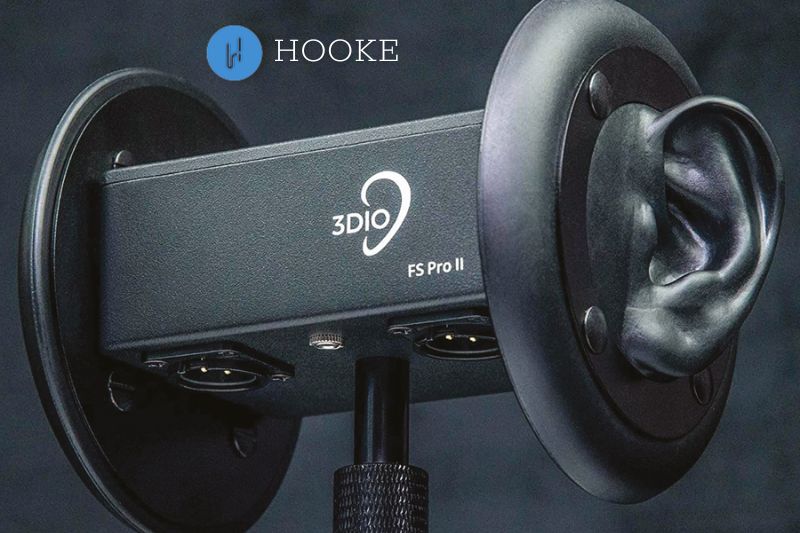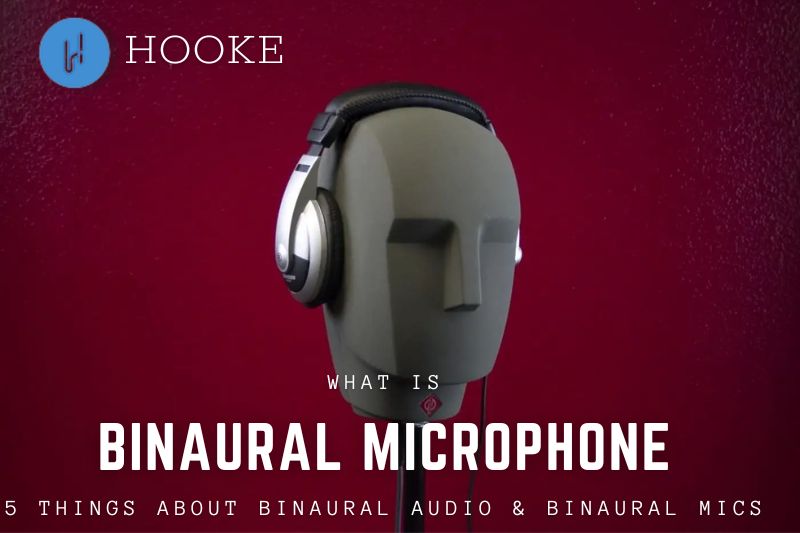- Anthony
Binaural audio is the next big trend that you need to keep an eye out for. While it seems a little untouched now, it has the potential to be that next big thing that everyone is going to be talking about for a while. To stay updated and ahead of the curve, check out these 5things you need to know about binaural audio and binaural microphones.
Contents
- 1 1. Binaural audio reproduces sound the way we actually hear it
- 2 2. Binaural audio is easy and affordable to produce
- 3 3. Binaural audio predates stereo sound by half-a-century
- 4 4. Binaural audio is for all content creators
- 5 5. Binaural audio is a necessary step on the road to ambisonics
- 6 What is binaural microphone?
1. Binaural audio reproduces sound the way we actually hear it
Human beings hear sound through two channels — a left ear and a right ear. And yet, thanks to the processing power of the human brain, we are able to locate sounds not just to the left and right, but all around us in a 360 degree soundfield. Binaural audio is recording the sound in the space that you hear it, so the position of the microphones and/or your head is very important and affects where the source of the sound is coming from.
By employing two microphones spaced to approximate the distance between the ears, a binaural audio recording captures the same information used by the human brain to produce a 3D audio image of the environment. When you listen to binaural audio on any 2 channel system, it produces the incredibly immersive sensation of being in the same exact spot where the recording was made.
2. Binaural audio is easy and affordable to produce
Until very recently, binaural audio recording was strictly reserved for audio professionals. The most common way of capturing binaural audio was by employing a dummy head with in-ear microphones. This required pro-level know-how, not to mention thousands of dollars to produce.
But this past summer Hooke Audio released the world’s first bluetooth binaural microphone, making binaural audio accessible to everyone. The Hooke Verse is priced for the everyday consumer. With microphones embedded in each earbud that pairs with your smartphone, you can also connect the Verse to a DSLR, a GoPro, or a field recorder. And whoever listens to your recording will hear exactly what you heard, how you heard it, as if they were listening through your ears and living through that experience.
3. Binaural audio predates stereo sound by half-a-century
The concept behind binaural audio was invented in 1881, just five years after the first telephone was successfully tested. The man who established the telephone system in France, Clement Ader, set up an array of dual microphones at the Opera Garnier in Paris, and transmitted an audio signal of the performance to listeners using two telephone earpieces.
It wasn’t until 1931 that what we now think of as stereo sound was patented. “Surround sound” came even later. It creates a panning effect by employing various types of speaker configurations — the most popular being a six-speaker arrangement known as “5.1 surround sound.” But it doesn’t enable you to localize sound in space with the same degree of precision as binaural audio.
4. Binaural audio is for all content creators
Binaural audio is coming back in a big way, due in no small part to the advent of mobile technology and the fact that we now consume all kinds of content with earpieces in. You can use binaural audio to record everything from a live concert and your own music to a podcast and a rock climbing adventure. Virtual reality is just be a Google Cardboard viewfinder away and the best VR experiences aren’t just visual — you need a complimentary 360-degree soundscape in order to feel truly immersed. In fact, as world-renowned artist Janet Cardiff has proven, binaural audio alone, without any visual accompaniment, is capable of producing its own very powerful type of virtual reality, the limitless potential of which has only just begun to get tapped.
5. Binaural audio is a necessary step on the road to ambisonics
The best method for capturing a 3D audio image is not with Binaural audio, but with a technique called ambisonics. An ambisonic recorder can capture a spatial sound field in a variety of different orientations. Some ambisonics microphones utilize four microphones arrayed in the form of a tetrahedron, while others can see as many as 60 mic capsules integrated. But these mics are prohibitively expensive, as are the virtual reality headsets required in order to experience the sound they produce. The Hooke Verse enables amateurs and professionals alike to capture high quality binaural 3D audio, and consumers to enjoy that content with the tools they already use on a daily basis. Ambisonics is undoubtedly the wave of the future, but the 3D sound revolution has only just begun.
Binaural audio is no longer reserved for industry professionals with the money and knowledge. It can be used by anyone for any purpose, with any expense of knowledge about sound or music. (Part of the fun is always learning, isn’t it?) Anyone can be a creator and a storyteller, and isn’t that what life is about anyway? Create anything and everything that you can, whatever your passion.
What is binaural microphone?

The binaural microphone is a stereo microphone made from two human-shaped prosthetic ears. Each ear canal has microphone capsules. Binaural microphones can capture audio in the same way that your ears hear it. The microphone’s ear-shaped pinna changes the sound waves coming in, much like how your ears shape sound waves.
Our brains interpret these changes as directional cues.
Binaural recordings can be listened to using headphones. The result is a natural, three-dimensional sound.
It gives the listener both the sensation of being in that space and facing the same direction as the microphone during recording.

